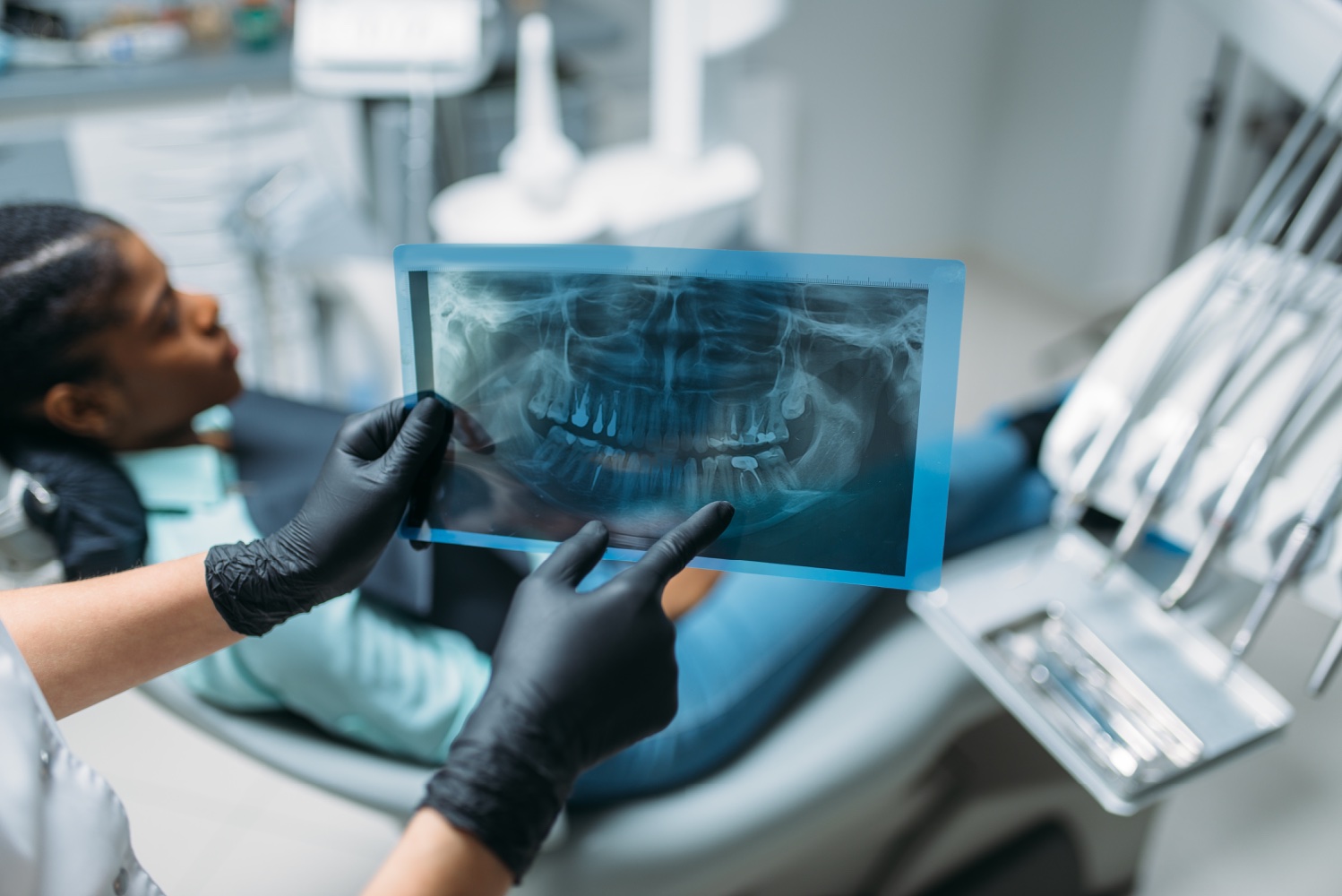Since oral and dental diseases are directly related to many other diseases that can affect the entire human body, oral and dental health protection is important for our general health and life comfort. However, since we use our mouth and teeth as an active communication tool while smiling, talking, and mimicking, our oral and dental health is of great importance for our self-esteem and social relations. Our oral and dental health protection and improvement occur with health professionals’ teamwork. This team may include dentists, oral and dental health technicians, dental prosthesis technicians, specialists from other fields, physiotherapists, and nurses if necessary. There are also different specialties for oral and dental health such as endodontics, periodontology, pedodontics, oral and maxillofacial surgery, implantology, prosthesis, and orthodontics.
Oral Implantology

Oral implants may include a single implant or a dental appliance containing multiple dental implants. Dentists and prosthodontists work together in the construction and application of these implants. After an extensive X-ray, computed tomography, measurements, examinations, and planning, the surgeon decides which type of orthosis will be applied. Implant types can be listed as follows:
- Endosteal implants
- Subperiosteal implants
- Transosteal implants
- Endodontic implants
Endosteal implants: These types of implants are placed in the jawbone. The endosteal implant can contain a single prosthetic tooth or more than one prosthetic tooth, depending on the patient’s condition. It is one of the most used implant types.
Subperiosteal implants: These types of implants are placed under the periosteum, the outermost layer of the bone. These implants, which have a frame-like structure with protruding latches, are suitable for the placement of dentures. They are the type of implants that have the ability to spread the force on the prosthesis to the entire bone.
Transosteal implants: These types of implants are placed through the jawbone. These are the types of implants that can be placed along the jawbone and form the base on which prosthetic teeth can be placed. They are mostly used in cases where the bone length is not sufficient for other implant options.
Endodontic implants: These types of implants, also known as endodontic stabilizers, are the type of implants that are usually applied to unstable, rocking teeth. In this type of implant, the tooth is fixed with a screw system placed at the root of the tooth.
In cases where the jawbone is too thin or weak to place an implant, the bone can be prepared for treatment with applications such as bone grafting.
Implant pins and frames can be produced from different types of materials. These are materials such as titanium, zirconia, polymers and composites, and cobalt-chromium-molybdenum.
Implant surgery is a surgery performed in stages and completed with outpatient treatment, which does not require hospitalization. The whole process can take months, but most of this is the healing process. The healing process may vary depending on the implant used and the condition of the disease. Before implant placement, the surgeon removes the problematic tooth, if any, and makes a wish to the bone tissue where the implant will be placed. After the implant is placed in the bone, healing is expected for a while for the bone to cover the implant and form a solid base for the denture. In this process, a temporary dental prosthesis can be used for aesthetic purposes, since you have a missing tooth. After this process, a piece called an abutment, which acts as a bridge between the implant and the prosthetic tooth, is placed on the implant. After this stage, the patient and the dentist can decide together whether the dental prosthesis will be fixed or removable. Dental implants usually show an uneventful healing process. However, in cases that may impair the healing process, such as smoking, not paying attention to oral hygiene, and actions that injure the implant, the implant can be removed and the treatment can be repeated after about three months.
Oral and Maxillofacial Surgery

Oral and maxillofacial surgery; is the field of dentistry that focuses on the diagnosis and treatment of diseases affecting the mouth, jaw, face, and neck.
It is unique in that it requires co-proficiency in both medicine and dentistry and is often seen as the bridge between medicine and dentistry.
This area focuses on the treatment of specialist conditions of both origins, such as head and neck cancers, salivary gland diseases, facial disproportion, facial fractures, facial trauma, correction of facial pain, and congenital abnormalities such as cleft lip and palate. It also deals with numerous problems affecting the oral mucosa, such as jaw joint disorders, impacted teeth extraction, jaw cysts and tumors, preparation of the mouth for dental implants and dentures, placement of dental implants, and mouth ulcer infections.
Oral and maxillofacial surgeons decide whether patients need an operation in the field of oral and maxillofacial surgery. All symptoms, medical history, current medications, etc. of the patient before the surgical procedure is questioned. Investigations such as dental X-rays or 3D scans are performed to take detailed images of structures in the shadow of the mouth and jaw. Oral and maxillofacial surgery varies greatly depending on the problem and the procedure. Some operations can be performed in an outpatient setting and the patient can be sent home the same day. Some treatment plans may involve more than one surgery to achieve the desired results.
Oral and maxillofacial surgeons can decide whether the patient needs anesthesia and the most appropriate type of anesthesia.
In the final part of the surgical procedure, the surgeon may use stitches to close any surgical wounds It can also place a tampon in the mouth to protect the teeth or wound and to absorb blood and inflammatory fluids.
In a short time after oral and maxillofacial surgery, patients may experience some side effects. These side effects include bleeding, bruising, limited use of jaws and teeth, edema (swelling), etc. can be counted as. Most of these are expected normal processes and can usually be overcome without any permanent damage under the control of a doctor.
Recovery after oral and maxillofacial surgery includes mild discomfort and tenderness that can be felt for a few days, depending on the type of procedure performed. In addition, patients may be advised to avoid certain foods and movements during the recovery period.
You may need to avoid certain foods and activities for days or weeks. Your healthcare provider will give you specific instructions.
Endodontics

Endodontics is a branch of dentistry that deals with the diagnosis, treatment, and prevention of diseases of the dental pulp (the structure that fills the tooth), tooth root, and surrounding tissues. The necessary endodontic treatment to treat pulpitis is planned to depend on the condition of the inner tissues of the tooth. If the dental fibers are still alive, the inflammation of the pulp tissue is reversible and treatable. A diseased pulp tissue that cannot heal and repair itself is considered necrotic (dead) tissue, which is an irreversible condition. The diagnosis and treatment of such conditions are determined by endodontic diagnostic tests of the affected tooth and surrounding tissues. In most cases, your tooth can be saved with endodontic treatment. Root canal treatment is the most frequently applied treatment in endodontics.
Root canal treatment is a procedure used to treat inflammation in the dental center. Root canal treatment is not painful and can save a tooth that will need to be extracted if left untreated. This inflammation in the center of the tooth is caused by bacteria. This situation; can occur in teeth damaged by dental caries, leaky fillings, and trauma. Conditions such as pain when eating hot or cold food or drinking water, pain when biting and chewing, and a loose tooth are conditions that may require root canal treatment. As the inflammation progresses, these symptoms may decrease and the patient may not feel pain. But these symptoms are an indication that the inflammation has spread to the root canal. Therefore, when symptoms such as toothache develop, it is important to consult a dentist immediately so that your tooth can be saved and treated more easily. To heal the inflammation in the root canal, the bacteria in the canal must be removed. This removal can be accomplished either by pulling the tooth or by root canal treatment. Since it is important to preserve the largest amount of natural teeth, root canal treatment is recommended when appropriate. Local anesthesia is usually sufficient for root canal treatment. In this way, the treatment is applied painlessly. After the bacteria in the canal is cleaned, the tooth is closed with a filling process. After the treatment, the inflamed tissue around the tooth also heals on its own. Root canal treatment is successful in almost all patients and the treated tooth can be used for years without any problems.